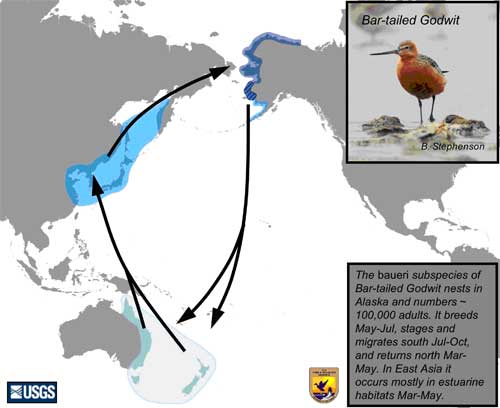The talk is well worth hearing in its entirety. I really enjoyed it. There's both wit and wisdom in it, and aplenty. At one point Chu asks, for example: What does a Boeing 777 have in common with a Bar-tailed Godwit? A: They can both fly 11,000 km nonstop. (The B-t G is a bird that annually migrates from Alaska to New Zealand in the winter, and has 55% of its weight in body fat. Likewise the Boeing has 45% of its weight in jet fuel. The factoid is relevant to a point he makes about synthetic biology - using nature as an inspiration, but going beyond.)

One of the most impressive things about Chu is not only that he refocused his research toward Climate Change mitigation beginning 2004, but, partly in response, he has also increased his knowledge base in biology very significantly. Today, from biologically created fuels on the one hand, to artificial photosynthesis on the other, solutions to Climate Change mitigation inspired by biology are being actively researched. Chu emphasized in his talk that one of the reasons for the success of Bell Labs was the 'scientist-manager', who could quickly decide whether a given idea had merit or not - because he was a often a hands-on practitioner of the field himself. Chu clearly embodies this ideal.
Chu is an active Facebooker, and I salute him not only for the content he personally uploads there, but also for the infectious enthusiasm and compelling sense of mission he communicates to the world at large and to technically literate and younger audiences in particular.
Here's an earlier talk by Steve Chu when he was Director of the Lawrence Berkeley Laboratory, from back in 2005, on the same general subject of climate change science, possible biomimic solutions (both to sequestration and to energy production), and the culture of Bell Labs in the 1940s-1980s period:
And an even earlier talk given at UC Berkeley in May 2004, when he was still a Professor of Physics at Stanford: 'What can Physics say about Biology?'. This one is more technical, and is about how RNA transcription works at the sub-molecular scale. It is also about emboldening physicists to attempt answers to biological questions, and how ultimately, it might well be possible to explain life in terms of the 'jiggling and wiggling of atoms and molecules' (an old quote from Feynman that Steve Chu cites in the talk). Physics, he points out, is still young (only 400 years since Galileo) and the future of physics may well lie in biology. There is also the very faintest hint that climate change may be ultimately be stabilized by a biological solution, because he points out that the amplitude of temperature fluctuations on earth dropped markedly after agriculture was introduced. Cause and effect is not fully clear: for example, it could be that the temperature stabilization was exogenous, but made agriculture possible as a result. Equally, it is also possible that agriculture was a form of biological anthropogenic intervention that, operating on a large scale, stabilized climate, making life and civilization (and physics) possible. Here is the hint that if photosynthesis was properly understood as a 'physics problem', then an 'artificial photosynthesis' could be designed that could sequester (fix) carbon dioxide from the atmosphere more efficiently.
